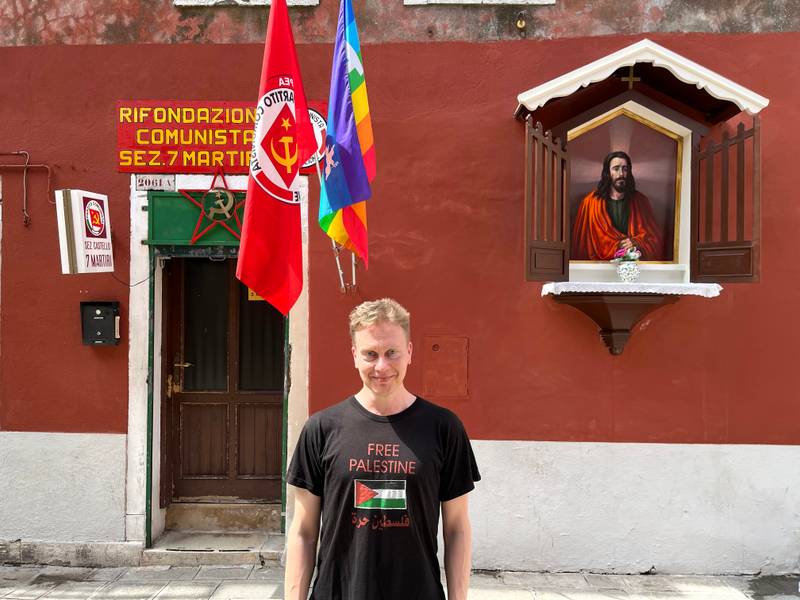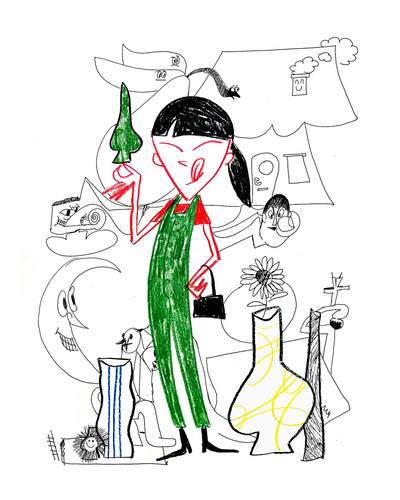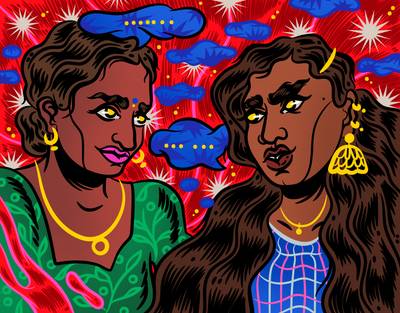

Triinu Soikmets is a curator and a writer.
TRIINU: As the president of the International Association of Art (IAA) Europe’s division, “the largest non-governmental association of visual artists with more than 100 member organizations”, how do you position IAA amongst other art institutions and next to states’ official culture policies – what are your specific working tools?
TEEMU: IAA is the voice of the (visual) artists. That’s the special and valuable thing about it. Visual artists don’t have any other international organization working for them or representing them. It’s essential that 42 European national artists’ organizations, such as the Estonian Artists’ Association and the Artists’ Association of Finland, can work together through IAA Europe in cultural politics.
In principle, the European Union leaves cultural politics mostly to the member states, but despite that, more and more decisions are made on the EU level. I think it’s mainly a good thing. An example from a neighboring field: nowadays, writers get money from the library distribution of their books in (I presume) all EU countries. This good principle came about mainly because of an EU directive. For example, Finland started to pay the library compensation fee to writers mainly because of this pressure from the EU, assigning 15 million Euros to its annual state budget. Without European-level lobbying, there would be zero Euros.
Similar things can happen in visual arts, too – and to some extent have already happened. For example, it’s now becoming the norm or at least typical for artists to be paid exhibition remuneration fees, and artists’ organizations can negotiate fair fees. It’s much easier and more effective to lobby for this kind of thing when you have a European umbrella organization supporting you because then you can say this is not just our freaky idea. It’s based on the official policy of this European organization that represents all European visual artists.
IAA is not alone. There is also EVA (European Visual Artists), which is not a competing organization but an ally: EVA is the umbrella organization of authors’ collective management organisations around Europe. It works only on copyright issues and royalties, whereas IAA’s mission is to improve visual artists’ working conditions and art’s role in society in every respect.
Artists’ unions or associations (these words are interchangeable) are absolutely necessary because individual artists are left at the mercy of the markets without them, which means your negotiating position is ridiculously weak. An individual artist can try to negotiate on their own and say to the museum I think a fair fee for my exhibition (or lecture, or performance or whatever) in your museum would be this. But unless they are an international superstar, the artist has really no power in that negotiation. The museum’s representative will say it is good to hear your opinion, but we can only pay this much. Take it or leave it.
Estonia’s art world committee recommended fair fees a few years ago, but institutions have yet to implement them. As a freelance curator, I have tried to advocate for an author who requested an exhibition fee but have received silence. Last year, the already meagre exhibition fees were also suspended in the galleries of the local artists’ association.
The role of the artists’ associations/unions in cultural politics is even more important when new legislation, guidelines or practices are proposed. If the artists’ associations are not convincing and actively participating in the negotiations about legislation, nobody else will look after their interests. Unfortunately, many artists and even non-artists don’t quite understand this. They don’t realize that in regular professions, whether you are an employee or entrepreneur, some kind of union always has your back and is trying to fight for your rights. But if you are a writer, painter, or freelance choreographer, you are more like a beggar or hustler unless you can organise with others like you and create some kind of union. These unions can be regular labour unions, as is typical, for example, in performing arts, where there are many jobs with regular salaries, or these unions can be the kind of unions that visual artists can create. The latter type of unions have a more multifaceted role than traditional workers’ unions, but the goal is the same.
EU has recently taken a much-improved position in these matters, as seen in the “Guidelines on the Application of Union Competition Law to Collective Agreements regarding the Working Conditions of Solo Self-employed persons”. The traditional attitude, very firm in Finland, has been that freelancers such as painters or writers must not be allowed to collectively negotiate for fair fees because it would be against the competition laws and thus cause illegal corruption of market mechanism. The new EU position breaks away from this principle. It points out that there are several unique situations in which freelancers must be allowed to use collective bargaining as a tool for striving for fair conditions and fair pay.
Cultural politics is interesting for someone like me who is interested in how society functions and wants to deal with political topics in art. And I’m only doing cultural politics on the side, about one day a week.
From governmental to environmental: I have heard rather conservative voices, which I tend to share, that art cannot change much in our society but can draw attention to problems. How do you feel? Can art change the environment, and what are artists’ roles in related discussions?
Those voices don’t know shit. Art is a revolutionary power. Of course, a lot of art is “conformist”. As you know, it’s an old term used mainly in Soviet times to describe the art that toed the party line. And the other kind of art was called “nonconformist”. These terms are still useful in our market economy societies. So, there is conformist art that expresses, supports and intensifies the dominant views, lifestyles and values in society.
A lot of nonconformist art disagrees with dominant values and practices. It offers critical views and proposes new values, principles and ways of living. And it does have a real impact. The mistake that’s often made when art’s impact is assessed sceptically is the assessment that says well, you wrote this book of poems, made this theatre piece and this film and these paintings, but none of them reached statistically significant audience numbers – an audience that would be big enough to make an actual difference in real politics so why do you do it, don’t you see it’s futile, politically?
That reasoning is not sound. The two main mistakes it makes are as follows: Firstly, even when an artwork has an audience of only 1000, it can have significant political power if its impact on its audience is intense. A lot of art has a much bigger audience, ten or 100 times bigger, but has a feeble effect on its audience, even its fans. Secondly, and more importantly, art’s impact on society, users, and audience is usually not like the impact of a vaccine but the impact of a diet. A single artwork rarely changes an individual drastically, whereas a single vaccination does make a massive difference to your health. Though not very common, sometimes a person’s direction in life can be changed by a single book. However, we all consume a lot of art – even those who claim that art is not for them – and what your artistic diet is, what kind of experience of existence it embodies, what sort of worldview it expresses, is often really, really decisive.
Two climate activists threw tomato soup in the National Gallery in London at Vincent van Gogh’s painting. In Finland, young activists sprayed the columns of the parliament building red to draw attention to the climate crisis. Was there any “use” of it? What are the threats and opportunities when art and ideology meet in a public space in potentially harmful ways?
It’s good. It’s a part of the spectrum of meaningful political work. You can vote, become a politician or other type of decision-maker, use your power as a consumer, and try to influence other persons’ opinions and worldviews. Both art and activism focus on the latter, on changing the minds and views of people.
Art and activism are nowadays overlapping fields. The same act can often be described as a political demonstration or as a piece of performance. That’s the reality. When I was an art student, we all thought an artwork must be “poetic”, meaning that it must not be direct like a poster but open to multiple interpretations and able to at least partly escape interpretations. That’s still my preference, but I noticed a long time ago, when working as a professor, that many young artists had a different definition of what art should be: they didn’t need the poetic; they just wanted to make a statement, a clear statement, but wanted to use artistic means that could make the statement impactful both emotionally and intellectually.
The only downsides of the type of actions you mention are that they can A) be a form of preaching to the already converted, B) polarise the political discussion even further, and C) some artists may feel that if they don’t get to the barricades themselves, their work is futile. These downsides and risks are common or not too big problems anyway.
How would you position exhibitions curated by artists and creative associations in the local and global art field? Are artist-run spaces more independent than state museums or private galleries? As far as I understand, your aim in participating in the current exhibition was to support such practice.
Artist-run galleries and galleries owned by artists associations are indispensable to the visual art scene. The scene would be much poorer, artistically, without them because artists are the real peer-reviewers of artistic work. It’s great that professional curators, museum directors and gallerists rely on their professional judgment when choosing artists’ and artworks and creating programs for their institutions and enterprises. But it’s equally important that artists themselves do it, peer-review each others’ artworks and exhibition proposals, develop programs for their galleries and so on. It’s also good when artists occasionally get to curate shows in museums, as artists offer a curatorial view that’s significantly different from the full-time curators’ view – and equally professional.
There is also an emancipatory aspect to this: it’s good that artists can create exhibitions and programs by themselves instead of their works becoming just building blocks from which the curator creates their big statement. Many exhibitions present mainly the curator’s statement, where the artworks (and artists) are reduced to props with which the curator expresses their views. There is nothing fundamentally wrong with that; sometimes you can see a great show where many of the artworks are not good at all, but the curator has created a composition, a new work from them, and this new work is genuinely interesting – and better than most of its building blocks. However, this kind of success is not common. More importantly, participating in this kind of game should be voluntary for the artists. Artists who know what they want to show and how to exhibit should be given the opportunity to do so without curatorial interference.
In your work at the “Under the Surface. Environmental Ideologies” exhibition, you quote Pentti Saarikoski: “Life is given to a man / to make him consider carefully / the position he’d like to be dead in / grey skies pass over / the sky’s a hanging garden / and the earth enters the mouth like bread.” Some years ago in Estonia, we had a campaign in the streets: “Wins the one who has the most things when he dies” – a sarcastic message to draw attention to the ridiculousness of consumerism. Are these kinds of quotes obvious to everybody?
There is an obvious side to these and also a deeper side. The campaign text you mention is banal but has a point and a good purpose. The Saarikoski poem has an obvious, banal level since the poem’s first obvious message is remember that you too will die, don’t try to escape that knowledge.
If I explain the content of the poem, both the explanation and the poem may sound clumsy. Even though I can thoroughly interpret it and turn it into direct, everyday language, the verbalized interpretation cannot replace the—em—its rewards are both in its “content” and its “form” in Saarikoski’s lines.
I have used these poems, sometimes by Saarikoski and Bertolt Brecht, and sometimes my poems in many of my theatre pieces, films, and visual artworks. On some level, these poems are as easy to understand as popular song lyrics. They are like a door through which the audience can enter the work and get nearer to the more challenging aspects of the work. On the other hand, I also like and respect this kind of simplicity in poetry. It’s part of my palette.
What is your view on the role of contemporary social art in the context of global economy and war politics?
I expect the arts to have a big impact on the direction in which, for example, the European Union will develop. I spend about a day per week on cultural politics as the chairperson of the Artists’ Association of Finland or in similar roles. It feels remote and different from actual artistic work – meeting the minister of culture with a few lobbying goals in the morning and then working on a theatre play in the afternoon – the two don’t mix.
In some papers about my artistic work, I’ve recently stated that my main themes are (i) Gender: from binary gender system to fluidity and multiplicity of gender; (ii) The 6th Mass Extinction: how to react to the ongoing human-made mass extinction, politically and philosophically; (iii) Wars, Refugees, Xenophobia: wars in Chechnya, Iraq, Syria, Ukraine and the refugee crisis; (iv) Leftist Politics: looking for an antidote to the hegemony of the richest 1%. (v) Working on new forms of democratic socialism as the best hope for humanity and other species, and (vi) Mortality And The Definition Of Good Life. Some people may find the list obvious, boring, and not very artistic, but they are now some of the most important ones globally. They are on my list as an artist because
Art is the most flexible, versatile, holistic form of philosophy and politics. And I’m glad there’s room for this kind of approach nowadays. For example, I’m working as one of the four researchers in JUEW (Just and Unjust Environmental Wars), a science & art research project funded by the Kone Foundation. We investigate the relationship between wars and environmental disasters by traditional research methods and artistic means. As a student in the late 1980s, my professors would tell me ok, Teemu, you can put these political or philosophical things in your artworks, but remember that the more of that stuff you put in, the less room there is for actual art. They thought the artwork was like a bucket, and the more politics you pour, the less room there is for poetry or aesthetics. They were wrong. It was only much later that I could articulate my view that an artwork is an object with numerous facets or an image with multiple semi-transparent layers. Some facets or layers can be as straightforward political slogans or scientific research results. Some facets or layers of the same work can be cryptic, poetic, open to radically different interpretations, and partly escape the verbalizing explanations of them. In any good artwork, there is an endless amount of room. While they often conflict with each other, they enrich each other, making the artwork a holistic investigation and statement about us and the world. That’s how I think of artwork. And I love it.
The interview was conducted during Under the Surface. Environmental Ideologies exhibition at ARS Project Space, Tallinn, Estonia.







